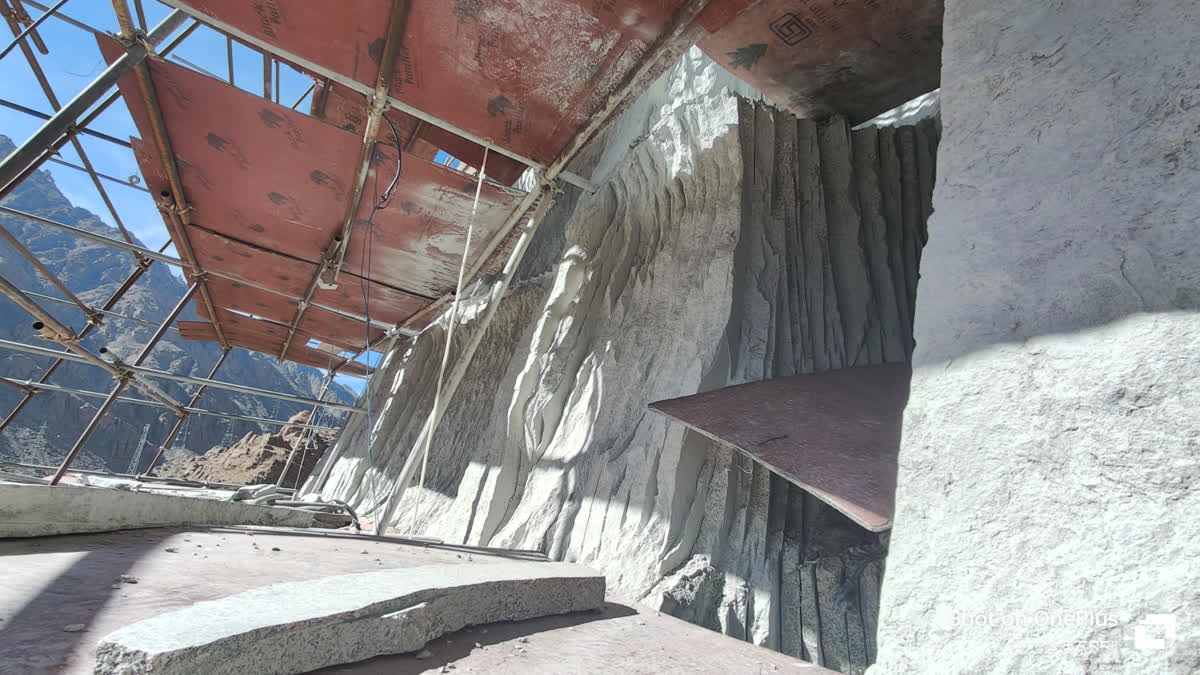Leh, Ladakh:On a quiet hillside in the remote village of Hanuthang, Ladakh, a 108-foot Buddha is gradually emerging from stone—a labour of love that began as a dream two decades ago. For the villagers here, this project is more than just a tribute; it’s a way to honour a piece of heritage that was brutally lost when the Taliban destroyed the original Bamiyan Buddhas in Afghanistan in 2001. Now, against the vast backdrop of Ladakh’s mountains, local artisans and monks are breathing life into a new statue, inspired by the ancient figures and fueled by the hands and hearts of a community determined to preserve their culture.
Ven. Ishey Stanzin, President of the project’s organizing society, stated that the inspiration came from a long-standing desire to honour the legacy of the Bamiyan Buddhas, once a revered symbol of Buddhism on the Silk Route. “It was His Holiness Drikung Kyabgön Chetsang Rinpoche’s wish to create a new Buddha statue in place of the Bamiyan Buddha. In 2001, Tokdan Rinpoche visited Hanuthang, saw this rock, and predicted that it would be a fitting site. However, we lacked funds at the time. In 2020, we finally formed a committee and began building,” Ven. Stanzin explained. The project’s inner structure has now been completed, with around Rs 35 lakh invested so far, all gathered through donations.
The statue is crafted by Stanzin Mingyur, a local artist from Nang village, who studied sculpture and painting at the Central Institute of Buddhist Studies in Leh. His work has also introduced an inventive funding source for the project—handcrafted cricket bats made from local willow. On November 3, the Chief Executive Councillor and other officials unveiled the bats at NDS ground, and proceeds from their sale are directed entirely towards the statue’s completion.
“Villagers couldn’t contribute financially, so they donated trees instead,” Ven. Stanzin explained. “Mingyur recognized the potential of using Ladakh willow to make cricket bats, with the entire crafting process handled locally, except for sourcing handles and stickers," he added. The project isn’t a business venture rather it will fund the Bamiyan replica and bring local craftsmanship into the spotlight in a unique way.
As of now, the bats are sold only within Ladakh, but there are plans to expand to national and international markets. “Community support has been strong, and we hope to take these bats beyond Ladakh to help fund this project,” he added.
